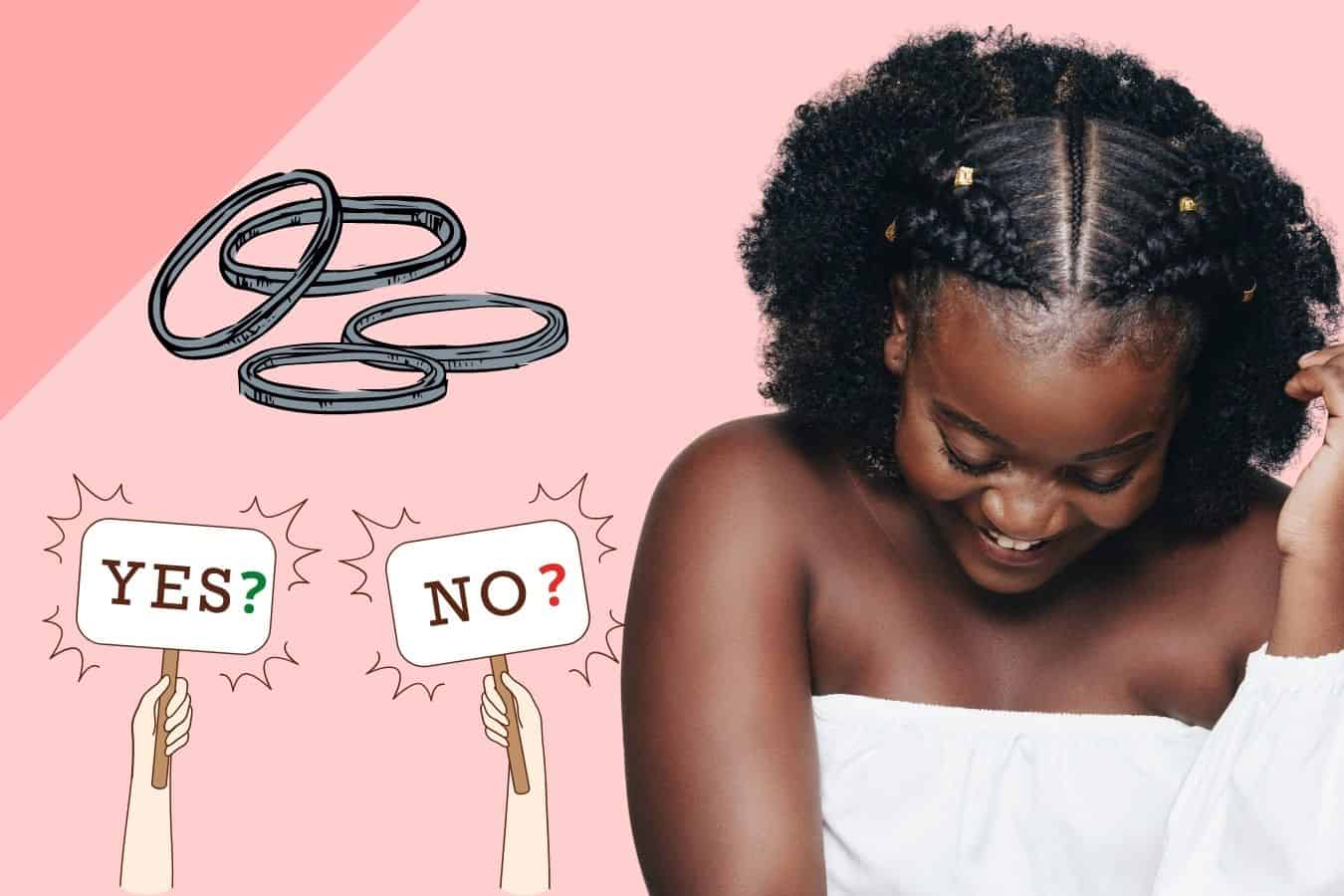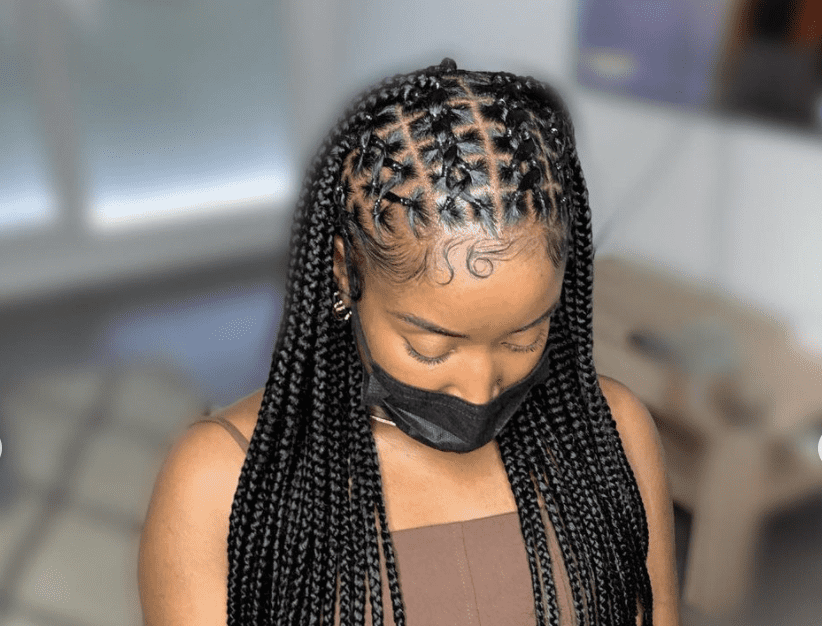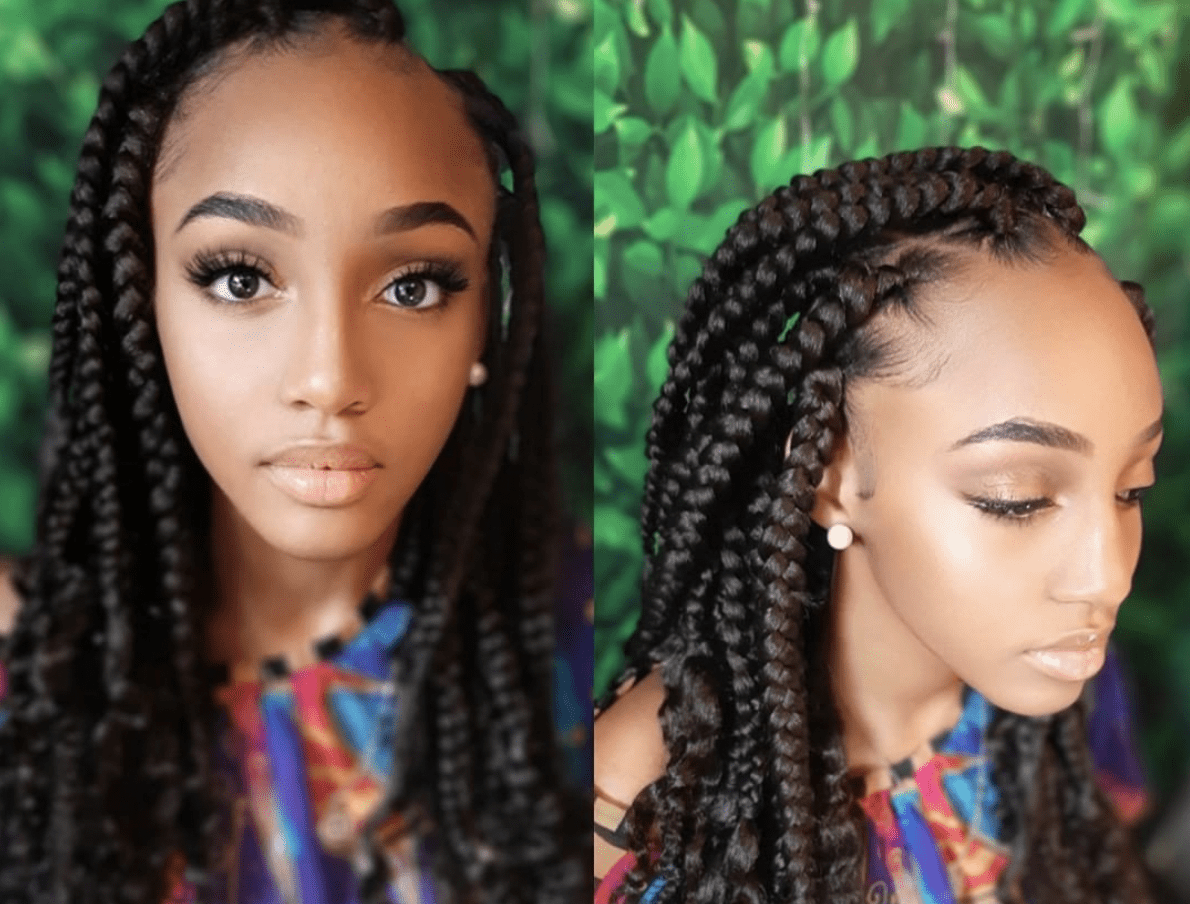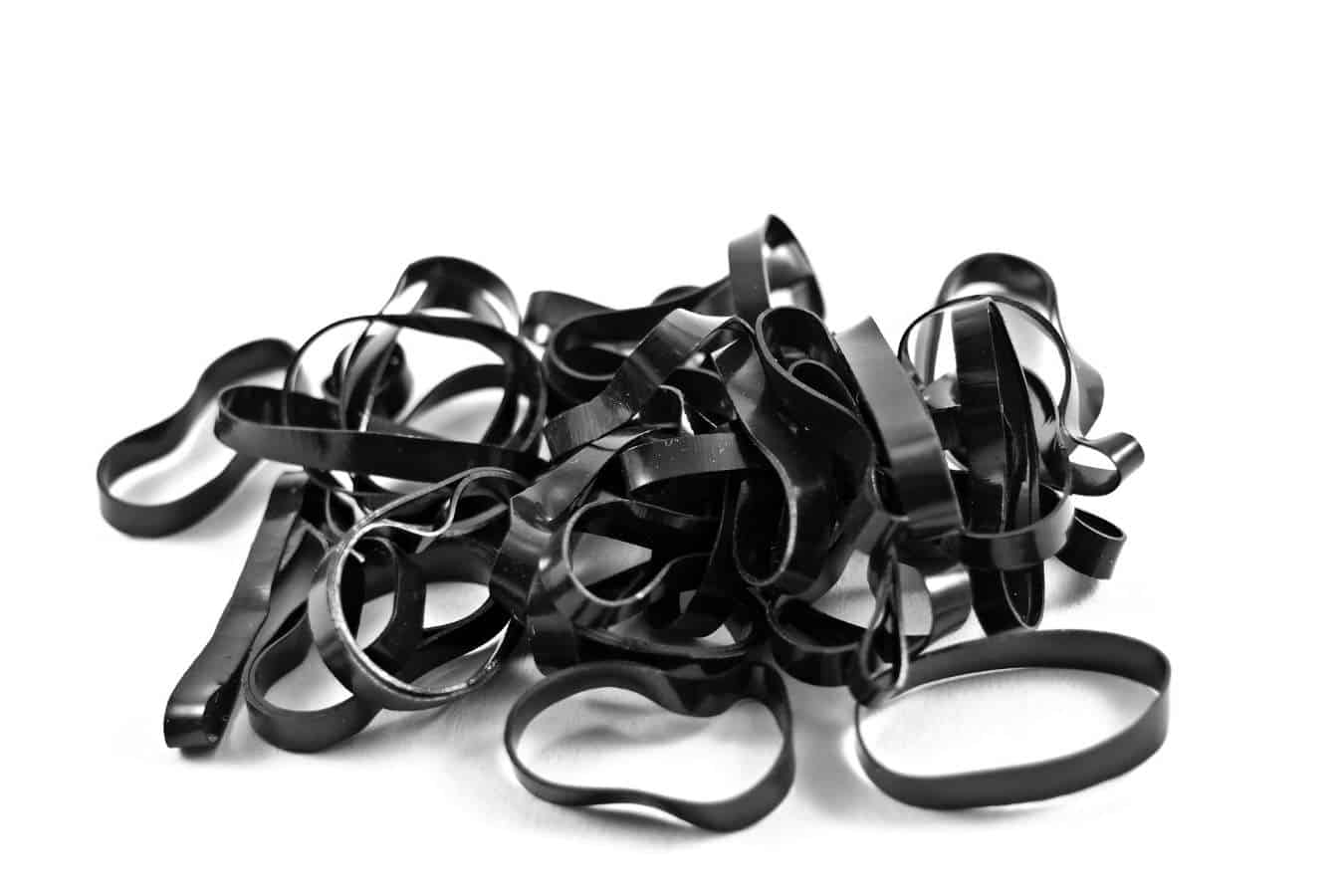Rubber bands are useful for managing loose hair. They can also be used for various hairstyles, such as box braids. But isn’t the rubber band method bad for hair? Let’s find out.

Rubber bands can cause tension and breakage when used improperly. However, the rubber band method can be used effectively for box braids and other hairstyles. The rubber bands should not be too tight or left for too long. Instead, they should be snag-free and must be removed carefully.
What Is The Rubber Band Method?
The rubber band method commonly refers to a box braid hairstyle that uses rubber bands to install the extensions.
The rubber band method for box braids is typically used on ethnic hair and is surprisingly a protective hairstyle.
That’s because the rubber bands that are used are low tension and friction-free.
In the short version of the rubber band method, hair is sectioned, and each section is tied firmly with a rubber band close to the roots.
Synthetic hair is then placed directly over the rubber band and braided in with the natural hair.
The hairstyle makes it easier and quicker to install synthetic hair without pulling at the roots, and once in place, the extensions shield the natural hair from environmental damage.
The rubber band method can also refer to any process that involves tying up your hair, whether to prevent it from getting in your face or as a styling technique.
For instance, one can use a rubber band to secure a simple ponytail.
Is The Rubber Band Method Bad For Your Hair?

Rubber bands can be used as hair ties because of their elasticity, but they can potentially be bad for your hair.
That’s because they can pull and cut through your hair or get tangled, causing breakage. However, not all rubber bands are created equally.
Rubber bands that are designed specifically for hair will not pull on your hair and are snag-free.
According to the American Academy of Dermatology, using covered rubber bands when styling hair helps prevent damage because the fabric can easily slide over your hair without friction.
Otherwise, using the wrong type of rubber band the wrong way causes the rubber band to dig deep into your hair and get stuck.
This is bad for hair growth, especially if you cut off some of your hair to remove the rubber band.
Tips for Using Rubber Bands In Your Hair

To avoid endless hair damage, here are more tips to keep in mind when you rubber band your hair:
- Use rubber bands to secure your hair firmly, so the rubber band doesn’t slide out easily. At the same time, the rubber band should not feel restrictive or make your scalp feel tender.
- Thin rubber bands tend to cause more damage because they can easily “slice” through delicate hair strands. Instead, use rubber bands that are wide, soft, and springy because they’re less likely to embed in your hair.
- Use rubber bands that snap easily under pressure. Durable rubber bands are damaging to hair because you can tighten them with no problems. Softer rubber bands will snap if they are too tight, so they won’t break your hair.
- Coating the rubber bands in oil before applying will give them slip and minimize breakage.
- Avoid using rubber bands that turn into a gooey mess when left too long, as they will stick to your hair and can pull out whole hairs when you try to remove them.
- Don’t use rubber bands on wet hair because they will snag easily, damaging your hair.
- When tying your hair, don’t use rubber bands too close to your roots. Use them as close to the ends as possible.
- Avoid using rubber bands in the same place because this will repeatedly weaken the same sections of your hair shafts. It’s better to switch up your hairstyle and use rubber bands on different locations of your hair by wearing high ponytails and low, loose hairstyles.
- Generally, it’s best to avoid using rubber bands where possible. Consider alternatives like ribbon hair ties, scrunchies, and spiral hair ties.
How Long Can You Keep Rubber Bands In Your Hair?

For starters, if you have used the rubber band method for box braids, you may want to wear your protective hairstyle for longer, but it’s best to leave the style in for not more than two weeks.
That’s because the point where the rubber band is wrapped around your hair is a gathering spot for dirt, lint, and product build-up.
This causes the hair to knot and tangle, leading to breakage once you unravel the braid. If you have used rubber bands to secure loose hair, it’s best to not leave them in for more than one or two days.
Rubber bands are more troublesome for textured hair because the hair shafts are usually curly, coarser, and thicker.
Leaving rubber bands in your hair for too long causes the hair to grow around the band, making it difficult to remove.
Even when used on other hair types, it’s best not to keep the rubber band in for longer than needed.
Safest Way To Take Rubber Bands Out Of Your Hair
When it’s time to take out the rubber bands from your hair, you should do so carefully to keep your hair safe.
Here are a few suggestions that can get the job done correctly:
Use Scissors to Cut the Rubber Bands
Cutting your rubber bands out is the quickest way to free your hair.
However, the process can still take time because you have to be delicate when cutting to avoid snipping off your hair.
If the rubber band is wrapped around your hair several times, it’s best to cut off only the top layer and then use your hands to unwind the band slowly and gently.
Remove the Rubber Bands By Rolling Them Down
Using scissors to cut rubber bands from your hair requires a steady pair of hands. If you’re not sure you have the required precision, the next best thing is to roll the rubber bands down slowly.
Don’t rip off the rubber band or tug it down, as this will damage your strands.
When rolling down your rubber bands, it may be necessary to add some oil. Greasing the rubber band helps it to slip and slide more easily down each section of hair.
This is particularly handy when removing rubber bands from curly hair that’s snarled around the rubber band.
Ask Your Stylist to Remove Them
Removing rubber bands safely from your hair can be a time-consuming and tricky process.
For instance, trying to cut off or untangle rubber bands is challenging without eyes at the back of your head.
In that case, getting professional help will ensure that most of your strands remain intact after the rubber bands are removed.
You can also ask a friend or family member to lend a helping hand, as long as they can do it gently and carefully.
Alternatives To The Rubber Band Method
If you’re worried that the rubber band method does more harm than good, consider the following alternatives:
Scrunchies
Scrunchies are better for your hair than rubber bands because they have a layer of fabric over the elastic band.
This prevents tangling, knotting, and breakage. Silk scrunchies are the best for your hair because the natural fibers are gentle on your strands. You should avoid scrunchies with metal bands as they can damage hair.
Telephone Cord Spiral Hair Ties
Spiral hair ties are designed to grip your hair without tugging on your hair. They won’t leave creases or dents in your hair when you finally remove them and are durable and snag-free.
Ribbon Hair Ties
Ribbon hair ties are wide, flat, and made from stretchy material that’s tied into a knot.
Like spiral hair ties, ribbon hair ties are gentle on your hair because they don’t snag or tug, and they also don’t leave creases in your hair when taken out.
Related Questions
Do Rubber Bands Help Hair Grow?
There’s no scientific evidence that indicates that rubber bands help hair grow. However, there is a study that provides evidence to the contrary.
The study showed that traumatic hairstyles that use rubber bands are associated with the development of traction alopecia.
Can You Use A Rubber Band On Dreads?
The best use of rubber bands for dreads is when you use them to section off hair during installation.
Rubber bands can also be used to secure loose hair to the dreadlocks around the roots and tips.
In addition, some people use rubber bands to hold two dreadlocks together to encourage them to grow into each other.
However, it’s best to avoid using rubber bands on dreads because they can easily embed in your locks and become difficult to remove.
What’s more, rubber bands can create thin and weak spots in your dreadlocks if wrapped too tightly. It’s better to use beads if you want to tighten your dreadlocks.
Disclaimer: This site is not intended to provide professional or medical advice. All of the content on LovedByCurls.com is for informational purposes only. All advice should be followed at your own discretion. Ingredients may change at any time so always check the product label before using. Check our full disclaimer policy here.
